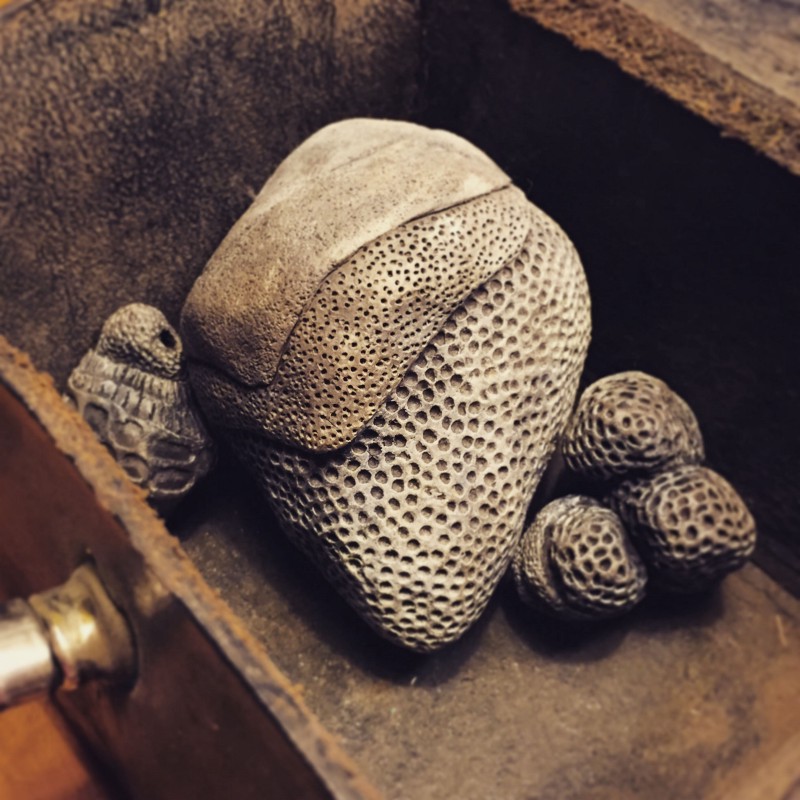September 4, 2016

The Pattern Recognition Machine
My sister has a problem. When she is creating something, the object that appears will be indescribable. There are no words. Hold it in your hand and you will get sensations, a familiar feeling sort of like fuzzy memories. You study it, try to find a slot in your brain that contains similar objects. Nothing fits.
Force her in the box of “ceramic artist” and all of a sudden you have destroyed a little of the magic that her art is comprised of.
Measure her work by size, material, color, texture, or time and you similarly kill the magic.
A photograph can capture a whiff of what to expect with the objects, but this too fails.
Even a gallery struggles to display the art. You can hover inches from the objects in a pristine room and still miss the full experience.
The objects beg to be held, treasured, and obsessed over. You want to take one, wrap it in cloth, stick it in your pocket and run far away. Once you are alone, you can pull it out and experience it the way it deserves.


I said my sister has a problem. This is the same problem that you and I will experience if we are able to create something truly authentic. Humans are pattern recognition machines. At some point our work inevitably makes contact with people who won’t be able to match your work with their mental patterns. Pattern recognition is convenient when we are stocking the shelves but it can be stifling when we interact with concepts that want to change us.
People understand the world by organizing everything into tidy little containers that allow us to assess anything at a glance. These boxes destroy magic. Artists change the world by creating things that don’t fit in those boxes. If you find yourself lacking the words to describe what you are doing, you are probably doing something right. That doesn’t mean your work will be embraced, however.
Things that don’t exist in pre-defined mental slots get one of three responses:
One is invisibility. If it can’t be put in a box, it just doesn’t exist for some people. They walk by.
The second alternative is discomfort. When forced to interact with something they can’t define some people rebel. This is the “I just don’t get art/religion/math” response.
The third response is change. If you are lucky, your work will recalibrate someone’s pattern recognition machine. That’s what next week’s post is all about, and it is the first step to changing the world.
Thanks for reading. I am honored to have my art sharing gallery space with my sister (as well as my mom and dad) at the art gallery in Norfolk, Nebraska. The show is up now through October 27. You should check it out. Stay creative.
Previous: Your Skull’s Fourth Wall
Next: Recalibrating Your Pattern Recognition Machine, Part 2